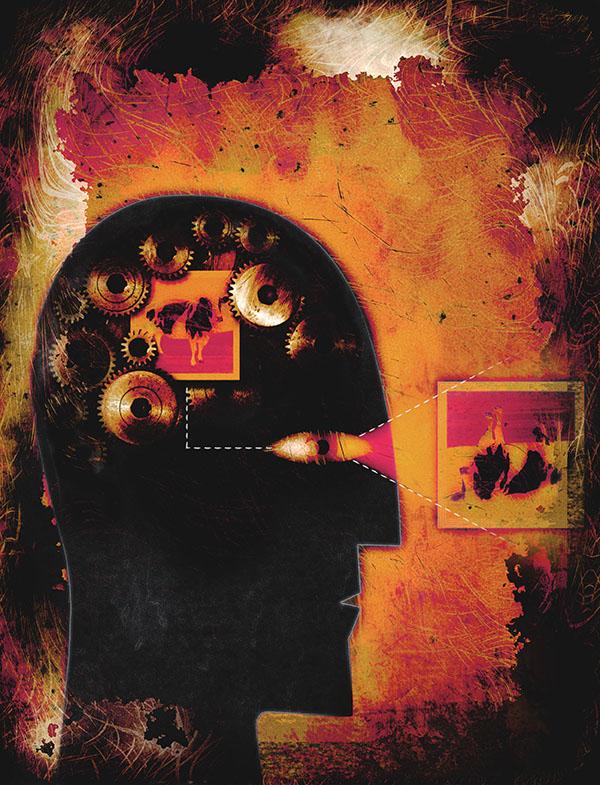Timing Your Harriton School Day
Rick Nease (Detroit Free Press 2012)
Look around any bookstore or newsstand, and you’ll notice that the science of timing is all the rage. Largely popularized by Daniel Pink’s book When, the idea suggests that we can become happier, healthier, and more productive individuals by timing our actions to better coincide with our chronobiological rhythms (which regulate our metabolism, sleep, and energy levels).
Here is a Harriton edition of how you can use the timing of your activities to get the most out of your day.
7:15 a.m.: Soak up the sun
To overcome morning grogginess, head outside, or at least open the shades. Exposing your eyes to sunlight will allow your body to stop producing melatonin, a sleep hormone, and begin producing cortisol, an alertness hormone. While waiting outside for the school bus, take full advantage of the benefits of the sunrise.
9:30 a.m.: Head to math class
Most adults and children perform their best on tasks requiring focus and analysis in the morning, when they are most energetic and attentive. A survey of British office workers found that 10:26 a.m. was rated as the most productive moment of the day.
However, the school day starts earlier than the typical 9 to 5 office opens, so the most productive moment for Harriton teachers and staff might be a little earlier. For adolescents, their biological clocks run later, meaning they are likely to be more focused several hours later.
As a student, you might be best prepared to handle differential equations and statistics during the set before lunch.
10:30 a.m.: Learn 1
To take full advantage of your morning productivity window, it might make sense to use Learn 1 as your time to consult a teacher or start your homework.
11:00 a.m.: Lunch 2
Taking a complete lunch break, away from a desk, is key to your mood and productivity for the rest of the day. A 2016 study found that people who regularly ate lunch at a spot other than their desks had lower stress, less fatigue, and more energy than those who ate at their desks. Find a spot in the cafeteria or hallway to relax during Learn 2.
1:30 p.m.: Head to creative writing class
While you are likely to be a better mathematician in the morning, you are likely a better artist in the afternoon. We are most creative when we are less vigilant and alert, often in the afternoon when post-lunch fatigue begins to set in. Researchers call this heightened creativity at times of greater fatigue the “inspiration paradox.”
3:00 p.m.: Get moving
From about 2 to 4 p.m., many people hit an afternoon slump that is the least productive and least happy part of their day (productivity hit a low at 2:55 p.m., to be exact, for the workers in the British office survey). Fortunately, school ends at 2:40 p.m., giving you the opportunity to take a break during this window to be active. Exercise that gets your heart pumping will help rejuvenate you from your sleepiness, so head to an afternoon sports practice or exercise class.
5:00 p.m.: Chatty commute
Studies suggest that people’s moods hit the low point of their day during their evening ride home. To beat the commuter blues, try speaking with someone on the bus: a 2018 study found that commuters who talked to others during the trip reported better moods. If you’re driving, try carpooling to both save the planet and improve your mood. If you happen to be alone, then listen to music that will put you in a better state of mind by the time you get home.
7:00 p.m.: Homework
After the productivity drop in the afternoon, most people’s energy and moods rise again in the evening, making this the ideal hour to complete the night’s assignments. For some people, especially during their adolescent years, the evening hours are the time of greatest energy and alertness during the day (even greater than the morning’s levels). If this sounds like you, use this time to your advantage to write those essays and tackle those physics problems.
8:00 p.m.: Eat your last night snack
While you might want to munch on snacks right up until you go to sleep, studies suggest that this method isn’t the best approach for your metabolic health. Your body associates eating large meals as preparation for activity, meaning a late-night feast will likely make it more difficult for you to produce the melatonin that will help you fall asleep. Additionally, studies have shown that eating the same amount of food, just earlier in the day, can lower insulin levels and blood pressure.
10:00 p.m.: Respond to emails
People’s moods usually climb to their daily highs by around 10 p.m., so you’ll be in a chipper state of mind when replying to any emails or messages. And if you’re a leader of a club or team, try not to leave your members’ emails unresponded toーa study at Microsoft found that the best predictor of employee satisfaction with their managers was how quickly the manager responded to email (with longer response time correlating with lower satisfaction).
Take a few minutes during your end-of-day high spirits to respond to messages. (Though make sure to protect your eyes while using screens at night: the blue light can interfere with your circadian rhythm, causing your body to think there is still daylight out. Using blue light-blocking glasses or enabling “night mode” can help.)
________________
We hope the tips above provided some insight into how you can make the most of your biological clock as a Harriton student. However, all people have unique bodies and preferences, so experiment with different timings for your activities to find a schedule that works best for you.

Amélie Lemay '20 hopes to keep the Harriton community up-to-date on all things science and tech. She was a staff writer in 9th grade and an assistant...



Ms Vogel • Sep 12, 2019 at 7:34 am
Love this topic! Using this article in my class THIS WEEK!